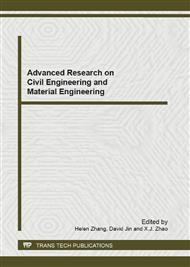p.191
p.196
p.200
p.204
p.208
p.212
p.216
p.222
p.226
Analysis and Depiction of the Dynamical Characteristic of Burning Zone Temperature in Rotary Kiln of Cement Material Production
Abstract:
The cement is one of the most important building materials, and the rotary kiln is a key equipment or process in the cement production industry. During the operating of the cement rotary kiln, the burning zone temperature (BZT) is an important production index and has a significant role on the quality of the clinker. However, the BZT has complex dynamic characteristic and is difficult to be described online using the conventional approaches. Although the BZT can be detected by using the expensive infrared pyrometer which located at the kiln head hood, it generally loses veracity due to the complex dynamics of the cement rotary kiln. In this paper, a novel approach is proposed to analyze and depict the dynamical characteristics of the BZT. Industrial tests have been performed to demonstrate the effectiveness and validity of the proposed method.
Info:
Periodical:
Pages:
208-211
Citation:
Online since:
September 2012
Authors:
Price:
Сopyright:
© 2012 Trans Tech Publications Ltd. All Rights Reserved
Share:
Citation:


